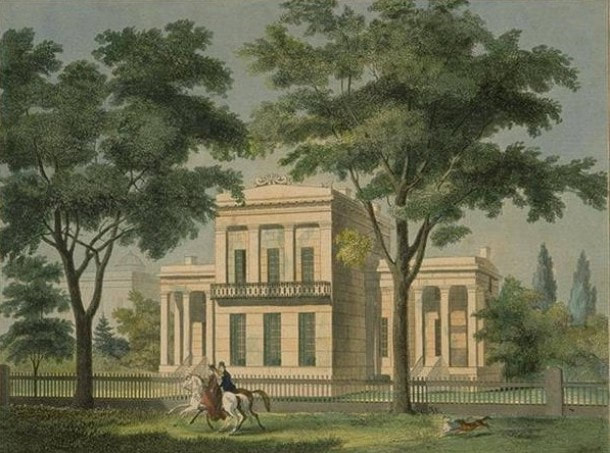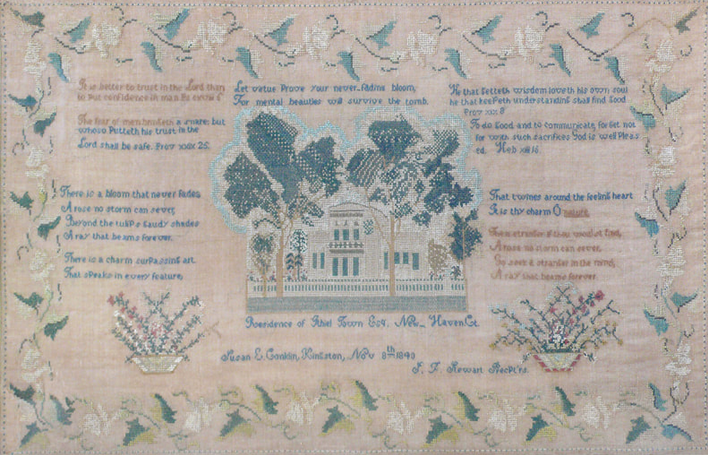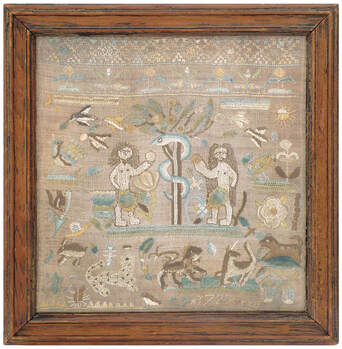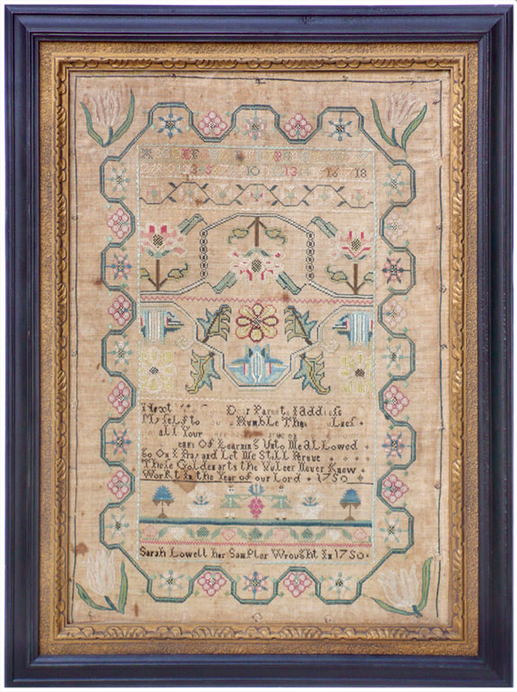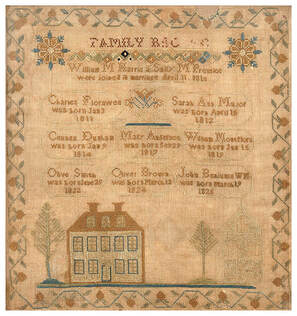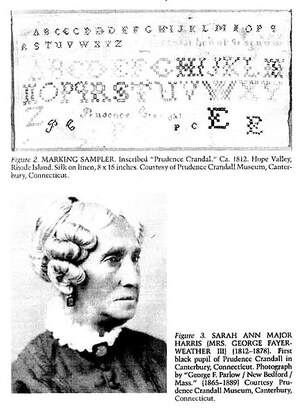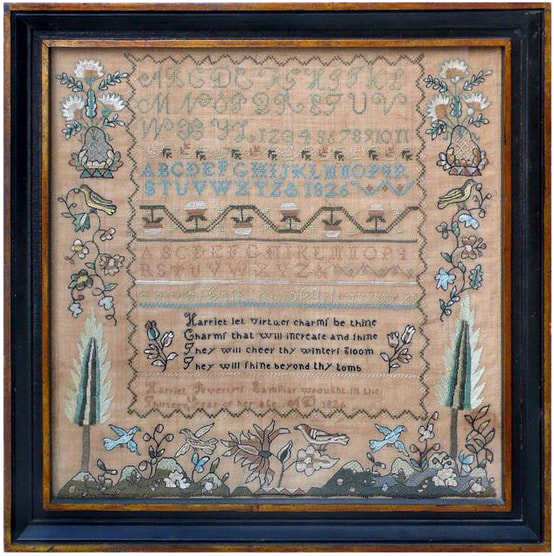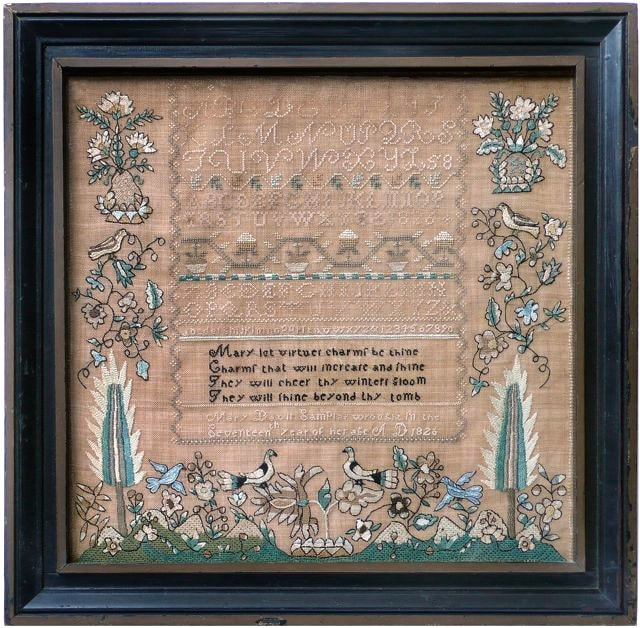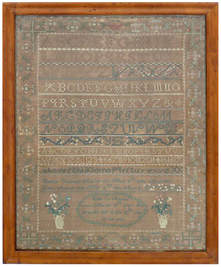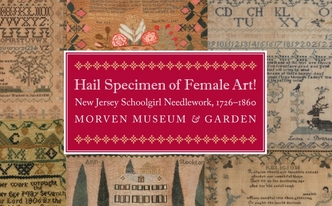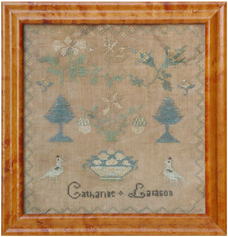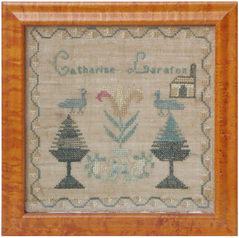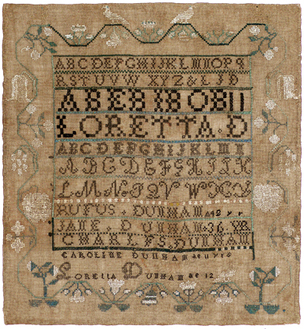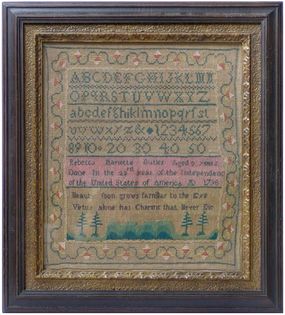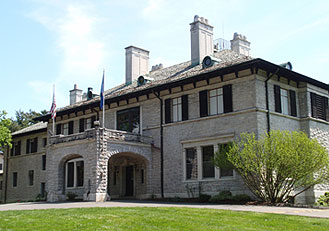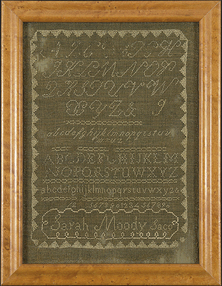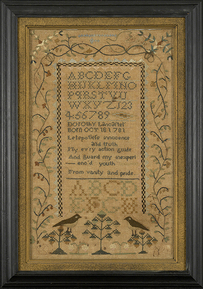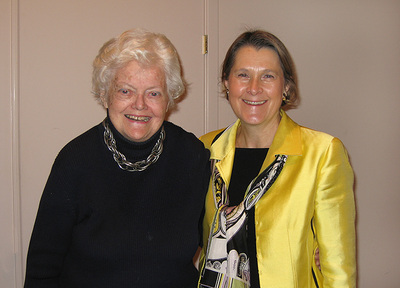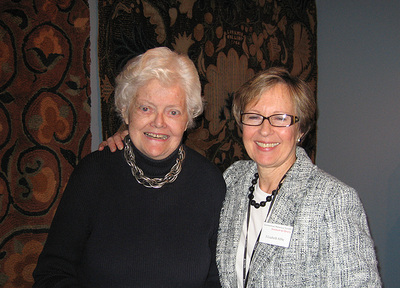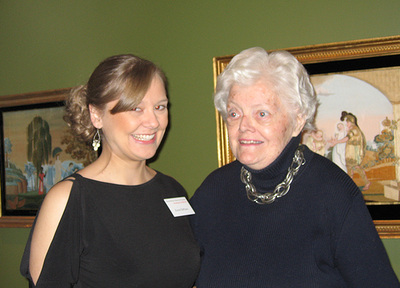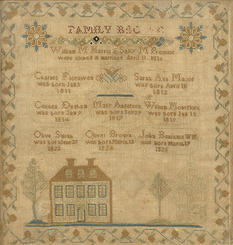Saco Museum
Industry and Virtue Joined: Schoolgirl Needlework of Northern New England May 8 - Oct 4, 2015 "After the Saco Museum's successful 2013 sampler exhibit, "I My Needle Ply With Skill," the museum has been recognized as an important repository for and center of scholarship on northern New England samplers and silk embroideries. This spring and summer the museum offers a second exhibit on schoolgirl needlework, with extensively researched and documented samplers and silk embroideries from Maine and New Hampshire."
This exhibition focuses on the important contribution of New Jersey in the creation of schoolgirl needlework in the 18th and 19th centuries.
"Organized geographically, the exhibition will feature works from every region of the state. Although many elaborate and important examples of New Jersey needlework will be featured in the exhibition, the curators have also included more modest examples that highlight other aspects of the educational environment, social class and familial situation experienced by young girls in the eighteenth and nineteenth centuries. In some cases, the exhibit will reunite, for the first time, needlework created by the same girl; sisters; cousins; schoolmates and other close relations."
Saco Museum
I My Needle Ply With Skill: Maine Schoolgirl Needlework of the Federal Era January 12 - March 2, 2013 Featuring the museum's outstanding collection of period needlework and loans from institutions and private collections. Three samplers from my collection were included in the exhibit. I My Needle Ply With Skill will be an in-depth look at the complex and lovely needlework created in Maine by schoolgirls of the late 18th and 19th centuries. At a time when advanced academic opportunities for young women were limited, private academies - often run by women - offered training not only in academic subjects, but also in the fancy sewing skills that were still of critical importance to future homemakers of the Federal era. While many of these schools were well established in southern New England states by the late 18th century, Maine developed private academies a bit later. As these local academies grew and flourished, new styles of samplers and needlework evolved that were unique to Maine.
This exhibit both explores that evolution and offers a glimpse of a period of blossoming female creativity and accomplishment that transcended the societal limitations on women of the era. The exhibition will include about 80 works and will be accompanied by an illustrated catalogue with an essay by Dyer Library/Saco Museum Executive Director Leslie Rounds. |
|
Connecticut Historical Society Museum - October 2010
Connecticut Needlework: Women, Art, and Family, 1740-1840
|
|
Connecticut Historical Society Museum - October 2010
Connecticut Needlework: Women, Art, and Family, 1740-1840 "Connecticut Needlework: Women, Art, and Family, 1740–1840" presents more than 70 samplers, silk embroideries and decorated clothing, bedding and accessories made by Connecticut women and girls. A final gallery is devoted to the needlework of one remarkable family and its best known member, Prudence Punderson. eMuseum Catalog: Connecticut Needlework: Women, Art, and Family, 1740-1840 |
|
Florence Griswold Museum - October 2010
With Needle And Brush: Schoolgirl Embroidery From The Connecticut River Valley Dubbed "Textile Summit 2010," some of the most respected textile curators in the country gathered to tour the exhibtion with guest curators Carol and Steve Huber. Of With Needle and Brush, Ameila Peck, Curator of Textiles at the Metropoltian Museum, stated, "What an exceptional exhibition. So happy to see these wonderful works of art." Pam Parmal, Curator of Textiles at the Museum of Fine Arts, Boston called the exhibition, "a tremendous body of work." |
|
Lecture At Mattauck Museum Sampler Symposium - October 2008
PRESS RELEASE for the Symposium A symposium organized in collaboration with the Litchfield Historical Society, and sponsored, in part, by the Institute of Museum and Library Services. Featured were lectures by Glee Krueger, author and renowned folk art and needlework scholar, and Kate Barker, field service director at the Textile Conservation Workshop. The purpose of the symposium was to increase awareness among those responsible for similar collections in the region about the importance and care of these fragile textiles and to develop a wider understanding of their significance as records of important events in our community heritage. Representatives from area museums and historical societies, as well as private collectors were invited to bring samplers from their collections. The day-long event showcased examples created between 1784 and 1840 by young girls aged 9 to 20 who lived in nearby towns and cities before the Civil War. Information about each sampler was recorded and digital files were created. These samplers are now searchable in a database online. |
|
Common Threads, Uncommon Beauty - September 2004
Lake Michigan Sampler Guild A day long gathering during which Glee presented two lectures. The first entitled "Pleasure of Their Company", a slide show of her personal collection including both miniature and large samplers. The second part of the afternoon included a slide presentation of the sampler collection from Vassar College where she had been researching regional sampler schools and the identity of the makers. The title of the lecture was "Common threads, Uncommon Beauty: The Martha Clawson Reed and Mrs. James W. Packard Collections". |
